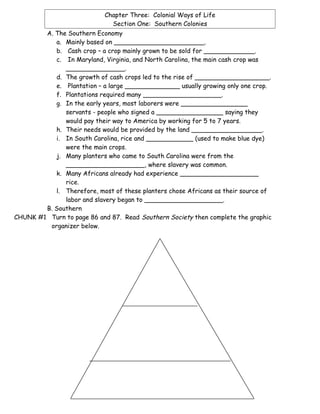The document summarizes the development of colonial life in the Southern colonies. It describes the plantation economy based on cash crops like tobacco in Virginia and Maryland and rice in South Carolina. Indentured servitude was initially used but slavery grew as the labor source. Africans were brought to the colonies and the slave trade expanded significantly. The triangular trade route brought slaves from Africa to the Americas and back to Europe. Slavery became a formal, racial institution through various slave codes that denied rights to African Americans.


